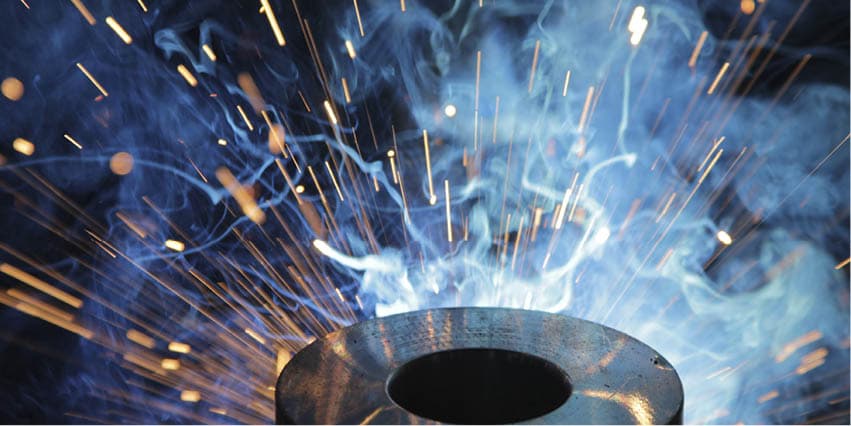Welding of wear-resistant material
Every machine component demands a tailor-made approach. In close cooperation with the client, Bekkers determines which techniques will offer the best result for each individual component. Besides machining, there are two basic techniques: thermal spraying and the overlay welding of wear resistant layers.
Thermal spraying
Thermal spraying involves the application of a metal, ceramic or synthetic layer on a surface to give it specific properties – e.g., wear resistance. This technique is applied for preventive maintenance, to repair used components and to improve new components.
It is highly suitable for treating all kinds of metals, alloys and plastics. The possibilities are practically unlimited: a layer can be sprayed of carbides, chrome/steel, stainless steel, copper, bronze, ceramics and plastic.
Advantages
No mixing occurs with the base material. This prevents any deformation and structural changes, which could arise in case of welding.
- As the base material does not melt, it is universally applicable.
- Cheap base materials can be combined with a specific high-quality coating.
- Thermal spraying is a cold process: it does not cause any stress or deformation of the machine component. Although melting is an exception to this, the controlled cooling process allows for excellent stress control.
- It is a relatively cheap and highly durable alternative for a new component.
- Only the worn part is repaired.
- Good for the environment: your original machine component gets a second and stronger life.
- Extremely short delivery times so that your machine downtime is limited.
- Spray layers can improve the machine component by giving it various properties, such as mechanical strength or corrosion resistance.
- Some spray layers are microporous. Lubricant in those micropores prevents metal on metal wear, so-called adhesive wear.
Overlay welding of wear-resistant material
Overlay welding is used to apply wear-resistant layers to worn machine components, such as screws, fans and cogs. These layers are also impact resistant.



